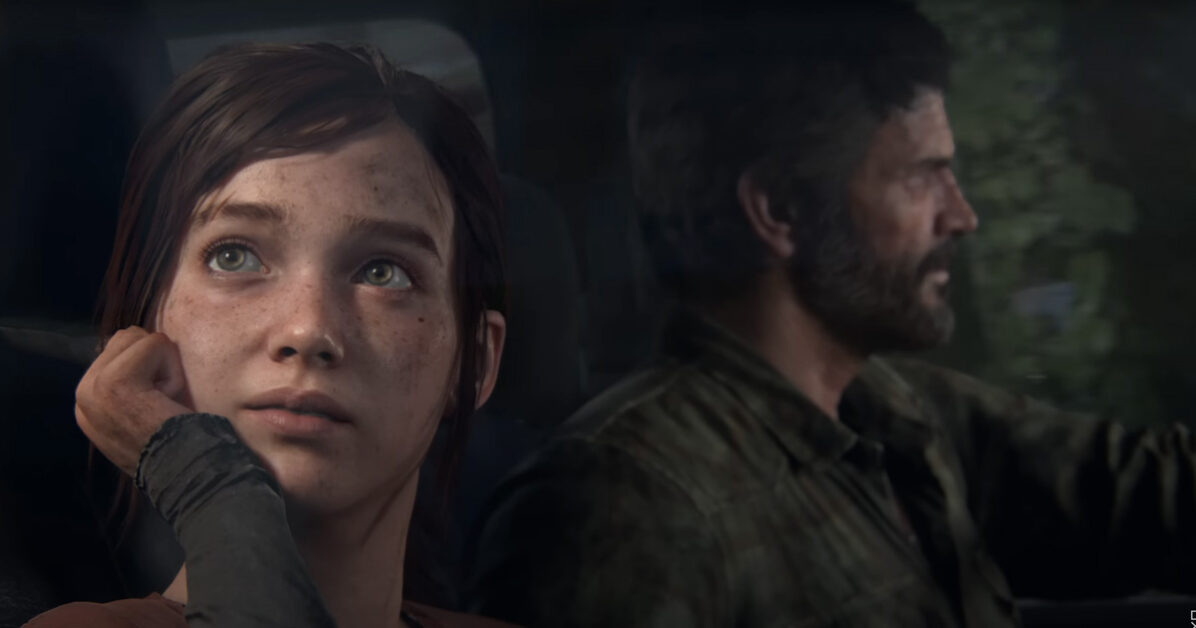Creating a game with a lot of replayability is an effective way to extend the lifespan of a game, and ideally, even multiply it. Quite convenient, given that nowadays the latest games come with a price tag of around 60-70 dollar.
Some games receive criticism that their short duration doesn’t justify the considerable price (I won’t mention any names, but eh..Spider-Man 2, for example). Games that, for instance, delve into choices and consequences, and offer players a rich environment full of secrets, often have a lot of replayability to offer. Hence, it’s no wonder Baldur’s Gate 3, Larian’s blockbuster with massive replay value, rightfully won Game of the Year 2023.
Here are six features that game designers can implement to boost the replay value of their game.
1. Choices and Consequences

Granted, this one is rather obvious. It’s crystal clear that choices and their consequences are a pivotal factor when it comes to replayability.
If I can shape the end of a game myself, it gives me the feeling that I’ve truly been involved in the game’s story. It helps me to step into the shoes of the protagonist. The moments when our characters have to make important choices feel like my responsibility. One of my more recent memorable gaming moments was when, in Cyberpunk 2077, I stared at one of the final choices for minutes, knowing it would undoubtedly determine the fate of my protagonist and his loved ones
It’s not just about the endgame, but also the journey leading up to it. Studios like Quantic Dream and Telltale Games excel in branching paths. The screenshot above, from one of the many storylines in Detroit: Become Human, illustrates how each choice leads to new events. The game boasts dozens of endings, bursting with diverse paths on your way there. Many deviations are subtle, such as in dialogue and reactions from your companions, but there are also several significant differences. Your protagonists can meet their demise at various points due to a wrong choice or a missed quick-time event.
Many studios also opt to create the illusion of choice. This isn’t always appreciated by players, but when combined with choices that do have impact, it can certainly contribute to a unique gaming experience. The balance between the illusion of choice and an actual choice with consequence is crucial here. Too much of the former is frustrating; as a player, you want to feel like your choices actually matter.
Telltale’s The Walking Dead is an example that sometimes relies too much on the illusion. It often happened that I felt like I saved an important character from death with my choice, only to see them meet their end in a different way 10 minutes later. When a studio chooses to create the illusion of choice, they better ensure there are also enough choices that are actually worthwhile.
A balance between the two ensures that a developer doesn’t have to create two completely different games, but still gives players the feeling that they can influence the course of their adventure.
Major consequences of choices made compel me to immediately want to know what would have happened if I had done things differently. Thus, it’s a significant motivation to start a game again right away, which I might otherwise never have touched again. If this approach leads to a kind of ‘Fear of Missing Out‘, then you’ve nailed it as a game designer.
2. A Rich Environment Begging to Be Explored

Another way to entice players into an additional playthrough is by offering them a rich environment begging to be explored. Once again, I can easily point to Baldur’s Gate 3, where players still discover new quests and events after multiple playthroughs. If players hop from main quest to main quest, there’s so much they’re missing out on.
Sometimes, the most interesting side quests trigger in areas far removed from the path you’re being directed towards. Players are rewarded for exploring. When run into an intriguing new quest or a powerful new weapon, you want nothing more than to comb through every nook and cranny of the map.
FromSoftware’s Elden Ring is another perfect example. The developer doesn’t hold players’ hands at all, throws them into the deep end, and practically says, “Try to stay alive and figure it out.” The map is packed with well-hidden boss fights and rewards, many of which are easy to miss.
As a player, I enjoy returning to worlds that look beautiful, but even more so to worlds teeming with life. And when I think of the latter, Red Dead Redemption 2 immediately comes to mind. At first glance, you might not immediately associate replay value with Rockstar’s linear masterpiece, but even in this game, there are many things hidden that players will miss during their first playthrough. The world feels alive. Not only do NPCs have their own lives, but even the animals around you seem truly alive.
Especially the interactions of the Van Der Linde gang at camp are incredibly deep, detailed, and varied. They react to things you experience, to their fellow gang members, and even to how the protagonist, Arthur Morgan, looks (they can make remarks about blood on your clothes). Every time I returned to camp, I felt like this world and its inhabitants were living their lives, with or without me. Many of the interactions with your gang members provide more background for the important characters you share your adventure with. The more time I spent at camp, the more I began to care about their fate, and that of the Van Der Linde gang as a whole.
A world that we spend dozens of hours in must be interesting enough to explore. A world that wants to lure us back for another playthrough must be diverse, challenging, and rewarding.
3. Character Customization

A less obvious way to add replay value is the ability to customize the character you’ve been staring at for hours. Not just beforehand, but especially during the game. This is particularly beneficial for games with strong cutscenes, allowing you to sit back and enjoy your carefully crafted character.
Games that force you to look at the same character, in the same attire, for dozens of hours are already at a disadvantage in my eyes. This should really only be allowed if the story justifies it. If the game spans over a longer period, then I like to have the option to change my outfit. This not only keeps the character fresh during a first playthrough, but it also adds much-needed variety when embarking on the adventure again.
I probably belong to the minority, but I rarely skip cutscenes. Even in second playthroughs. I appreciate being able to try out new outfits or a new hairstyle/beard to see how my character looks in that one cool cutscene.
For the game that nails this perfectly, I must once again point to Red Dead Redemption 2. Protagonist Arthur Morgan’s dynamic hair and beard growth are fantastic, believable, and give you the opportunity to choose your own style without breaking immersion. I frequently visited the barber, bought stylish clothing, and trimmed my beard (unfortunately, I don’t have impressive beard growth in real life, so I must take what I can get in the digital world).
And as mentioned, this should be reflected in stunning cutscenes. Cyberpunk 2077 offers extensive character customization, all the way down to the genitals. The shops are also filled with loads of clothing items to outfit your protagonist, V. However, you never see your creation again, outside of photo mode. The time I spent designing V and his genitalia felt like a waste of time. I would’ve loved to see my merc showcased in an action-packed cutscene.
4. Different Classes

By offering players various ways to deal with their enemies, developers immediately provide motivation to try a different approach. RPGs like Skyrim, Baldur’s Gate 3, and Elden Ring handle this particularly well. As a player, you specialize in a class, which automatically rules out certain other options. If you choose to be a fighter, don’t expect to be able to hurl massive fireballs at your enemies later in the game. If you work as a wizard, you will be vulnerable in close combat.
Another consequence of classes is that you can only use a limited portion of the game’s arsenal. Fantastic weapons from a class that isn’t yours can be immediately sold off (unless you can give them to companions, of course). Ideally, players should immediately see weapons and think, “Cool, I want to use that when I choose the rogue class in my next playthrough.”
Different classes don’t necessarily keep the visual aspect or the story exciting, but perhaps the most crucial aspect: gameplay. It forces us players to adapt our tactics. If we’ve played as a strong knight in our first playthrough, we’re used to charging at enemies and hammering the attack button. Another class may require us to keep our distance or sneak up on the enemy. Or to unleash a devastating spell from afar. It provides a completely new gaming experience and, therefore, strong motivation to replay the game.
5. A Compelling Story

A strong story can provide replay value, especially over an extended period. When I play a game with a fantastic story, I don’t immediately replay it when the credits roll. When a game nails the story, I often first think about it for months afterward. Strong narratives often evoke emotions and thoughts, keeping players engaged not only during a playthrough but even afterward (here are 6 examples of such thought-provoking games).
But as good as a story may be, it eventually makes room in your mind for other, more recent events. Some players may forget certain details sooner than others, but eventually, certain parts, big or small, will fade from memory. And that’s the perfect moment to boot up that game again and get swept up in the story once more.
Even more bonus points can be earned by combining this point with point 1: choices and consequences. If you can influence a great story and the game can unfold in different ways, the urge to greet an old friend again becomes extremely strong. uitermate groot.
6. New Game +

More and more games nowadays get a New Game Plus mode, sometimes even months after release. The latter is also handy for developers to give players a friendly reminder and ensure their game doesn’t fade into obscurity. Combine this with a few cool new outfits and a higher difficulty level, and players have plenty of reasons to try their luck again.
New Game+ can encourage players to choose a higher difficulty level. After all, you often retain your strongest weapons and skills, which gives fans the confidence to take on a greater challenge. It’s also an opportunity for trophy hunters to snatch up those last few trophies. For the same group, studios sometimes make new trophies available that can only be unlocked in New Game+.
This mode works best in games that possess one or more of the earlier points because it certainly helps if there are more things to discover in a new playthrough.
Which games do you replay endlessly? What are the game features that motivate you to replay a game? Let me know in the comments below!







